Zozo (Los Angeles, CA)
Zozo at Maison Midi
148 S La Brea Ave, Los Angeles, CA 90036
323-746-4700
www.zozolabrea.com
Sat 02/17/2024, 06:10p-10:40p

Back in the late aughts, when I first began exploring the then-rising DTLA dining scene, one of my favorite spots was Chef John Sedlar's Rivera. The South Park eatery impressed me with its pan-Latin American fare, and soon became one of my go-to places in the area, so I was certainly saddened when it closed at the end of 2014. I had thought that Sedlar and LA had parted ways forever, and therefore I was pleasantly surprised when it was revealed that he'd be returning to the Southland with a totally new concept. Zozo thus grand-opened on February 2nd, serving what the restaurant calls the "cuisine of the sun," which ostensibly draws from French, Hispanic, and Native American traditions. The Chef's partners are William Chait, Raphael Francois, and Jordan Ogron, who together form FOC Hospitality.
About the Chef: John Stanley Sedlar (a.k.a. John Rivera Sedlar) was born in December 1954 in Santa Fe, New Mexico. Father Joseph "Joe" Sedlar was in the Air Force, so as a child, he actually lived in Utah and California, as well as in Spain and France. However, the family would return home to Santa Fe every few years, and moved back permanently after dad retired in 1967. Mother Rose's side of the family had roots in Abiquiú, a small settlement about 50 miles north of Santa Fe, and it was at the adobe abode that his great-grandparents built where Sedlar experienced his most formative food memories. Aunt Jeronima "Jerry" Newsom was actually personal chef and chauffeur for Georgia O'Keeffe (who lived nearby), while maternal grandmother Eloisa Martinez Rivera was particularly skilled in the kitchen, and taught her grandson the foundations of New Mexican cookery.
In his early teens, Sedlar got a job at a gas station in order to earn some money, but started working in restaurants not long after, thanks to some strings that Eloisa had pulled. His first position was at the historic La Fonda on the Plaza, but he soon transitioned over to The Bull Ring, a longstanding spot that served both French haute cuisine and casual New Mexican fare. He began as a dishwasher, then moved over to the French side of the kitchen, which was run by Chef Jean Frigo, an early mentor. Sedlar stayed there for around two years, then moved to Southern California in 1973, following high school graduation.
He (along with some friends from Santa Fe) settled in the South Bay, and soon found a job at a restaurant in Manhattan Beach called The Silo. He eventually rose to become Executive Chef there, turning the menu from Californian to French to Southwestern, but still lacked passion for his craft. In 1975, Jean Bertranou opened L'Ermitage on La Cienega (at the site of the current Koi), and after Sedlar had a mind-blowing meal at the French spot, he decided to become an apprentice there, working in garde manger and refining his cooking skills even further (alongside Roy Yamaguchi). After Bertranou died unexpectedly in 1980, Sedlar struck out on his own, partnering up with his friend (and fellow chef) Estevan "Steve" Garcia to start their own place in Manhattan Beach. The day they signed the lease on the space, the two celebrated by drinking a bottle of 1953 Château Cos d'Estournel, a wine from Bordeaux's Saint-Estèphe appellation that inspired the restaurant's name.
Saint Estèphe bowed in October 1980 serving nouvelle Cal-French fare, but in the fall of 1982, Sedlar was inspired by Paul Bocuse to experiment with regional American cooking, and thus returned from Santa Fe with 15 cases of chili peppers and other ingredients and got to work. He gradually introduced contemporary Southwestern dishes to the menu before switching over completely the following spring, thus giving birth to a new genre of New Mexican-meets-French fusion that was immortalized in the Chef's first cookbook: Modern Southwest Cuisine, released in 1986. Despite the fame and acclaim that his food had brought him (in 1984, he made James Beard's "Who's Who of Food & Beverage in America" list), Sedlar sold his stake in Saint Estèphe to Garcia in 1990, and the restaurant shuttered in July 1992.
He then commenced work on his next project, Bikini, which opened in Santa Monica in late 1991. This sophomore effort was even posher, even more venturesome, even more globally-inflected than his first, and was also well received. Unfortunately, the place closed for good in January 1994 due to fallout from the Northridge earthquake and the generally poor state of the economy. Sedlar's next move was to partner with Kimpton on Abiquiu, which landed in San Francisco in May 1994. At the end of July that year, it was joined by a second outpost in the old Bikini space. Abiquiu was decidedly more casual, more overtly Southwestern than its predecessor, but the SF iteration only lasted a year, while the Chef sold his stake in SaMo in February 1996 (the restaurant didn't last long after that, and was turned into Rix, then Union).
Following, Sedlar consulted at the Pacific Design Center for four months, then was tasked to create the menu at Billboard Live, which opened on the Sunset Strip in August that year (it was renamed The Key Club in 1998). His next challenge was to develop an eclectic menu for Encounter, the restaurant at LAX's Theme Building, which dropped in 1997. In 1999, the Chef started Abiquiu Foods LLC (d.b.a. Sedlar's Southwest Kitchen), a company focused on selling grocery food products. During this period, he also wrote two cookbooks--Tamales (1997) and Great Chile Relleno Book (2002)--and also served as spokesman for Patrón tequila for eight years. And this was in addition to all the catering, traveling, and researching happening concurrently, which helped give rise to an idea for Museum Tamal, a museum dedicated to Latin cuisine.
However, Sedlar soon began missing cooking in an actual restaurant, and thus teamed up with Bill Chait and Eddie Sotto to launch Rivera. Named after the Chef's grandma, the place bowed in January 2009 and helped breathe new life into the Downtown LA dining landscape. The LA Times gave it a three-and-a-half star rating, while Los Angeles Magazine was even more generous with its four stars. Esquire deemed the spot one of its Best New Restaurants of 2009, and even named Sedlar "Chef of the Year" in 2011. James Beard conferred semifinalist status to Sedlar for five consecutive years from 2010 to 2014, and Rivera even launched the career of celebrated barman Julian Cox, who's become somewhat of an icon in the LA bar scene. Its success eventually gave rise to another eatery called Playa, which opened in February 2011 in the Fairfax District.
However, Sedlar eventually decided to move back to Santa Fe, and thus shuttered Rivera right at the end of 2014 (Playa closed in March 2013). Now back in New Mexico, the Chef debuted Eloisa (also named after his abuela) inside the Drury Plaza Hotel in April 2015. The Southwestern spot was nominated for James Beard's "Best New Restaurant" award in 2016, but Sedlar stepped away from the business at the end of 2019, and the place was shut down the following April. However, by 2021, the now-retired Chef had been convinced by Chait to open one final restaurant, so here we are today.


Located on the western edge of Hancock Park, along its border with Fairfax, Zozo takes over a space that formerly held the longstanding Cafe Midi, which opened in 1998 but had closed during the pandemic. Interestingly, the restaurant is actually set in a home decor store called Maison Midi, which is an offshoot of clothing retailer American Rag next door (both are owned by Mark Werts). The setting does make for a bit of an unexpected dining experience. Patio seating is also an option.
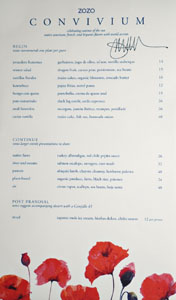
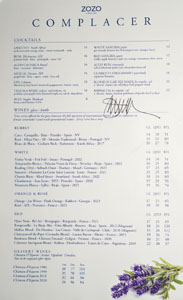
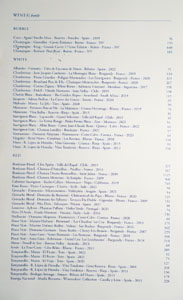
Tonight's menu, replete with some curious dish names, went by the also-curious moniker of Convivium. Beverage-wise, you get an array of theme-appropriate cocktails from Heidi Wittekind (The Hungry Cat, Fig & Olive, Zengo, The Bazaar), as well as a small but fairly interesting wine list from Jordan Ogron focused on producers from areas around the prime meridian. Note the red poppy motif on the menu, a nod to Georgia O'Keeffe. Click for larger versions.
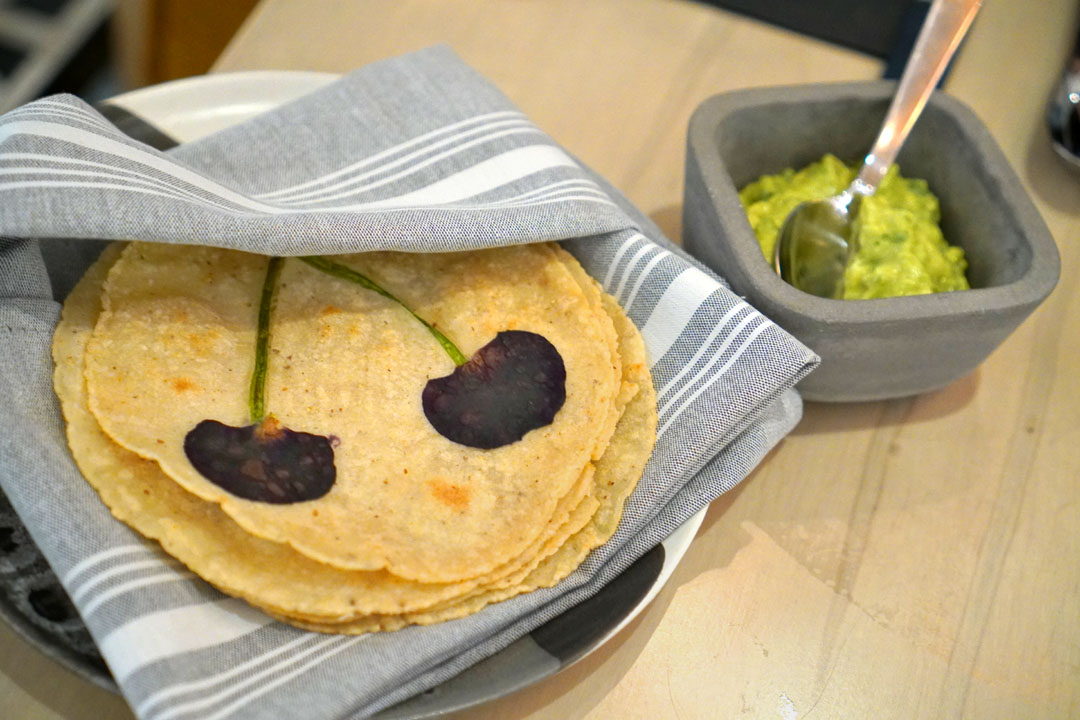
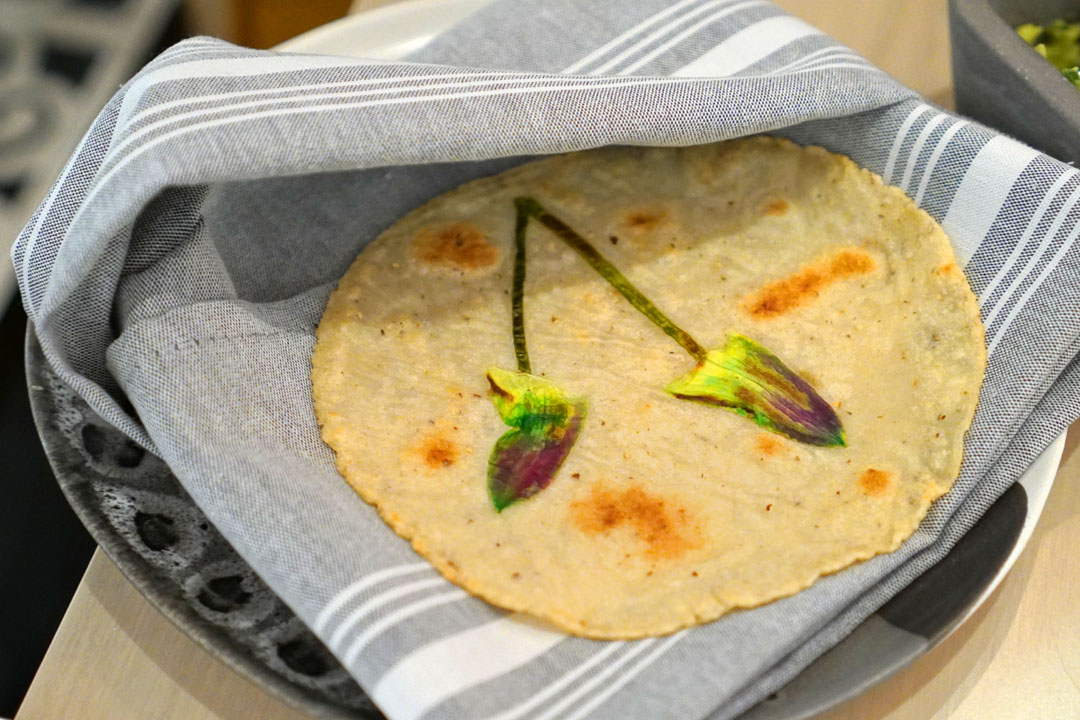
tortillas florales [$16.00] | maize cakes, organic blossoms, avocado butter
These flower-impregnated corn tortillas were a staple at Rivera back in the day, so I was glad to see them on the menu tonight. I loved their texture--a combination of crispy griddled bits and supple sections--while their masa-forward, just ever so slightly floral taste matched like clockwork with the guacamole. Straightforward, but oh-so satisfying.

We were provided a welcome beverage in the form of the Blanc de Blanc - Graham Beck - Robertson - South Africa - 2017. The sparkling wine showed off loads of orchard fruits on the nose, pear in particular, though with time, dark, more plummy nuances began appearing. As for the palate, I found it rich, concentrated, with a nuttiness commingled with citrus and just a smidge of yeast.

winter salad [$15.00] | dragon fruit, cactus pear, persimmon, sea beans
Sedlar's known for his fondness for distinct plateware, and that proclivity was certainly on display tonight. This salad made for a refreshing beginning thanks to its unabashedly bitter notes, juxtaposed against a troupe of sweet, juicy elements (I was especially surprised to see the use of star fruit). Nice crunch here, too.
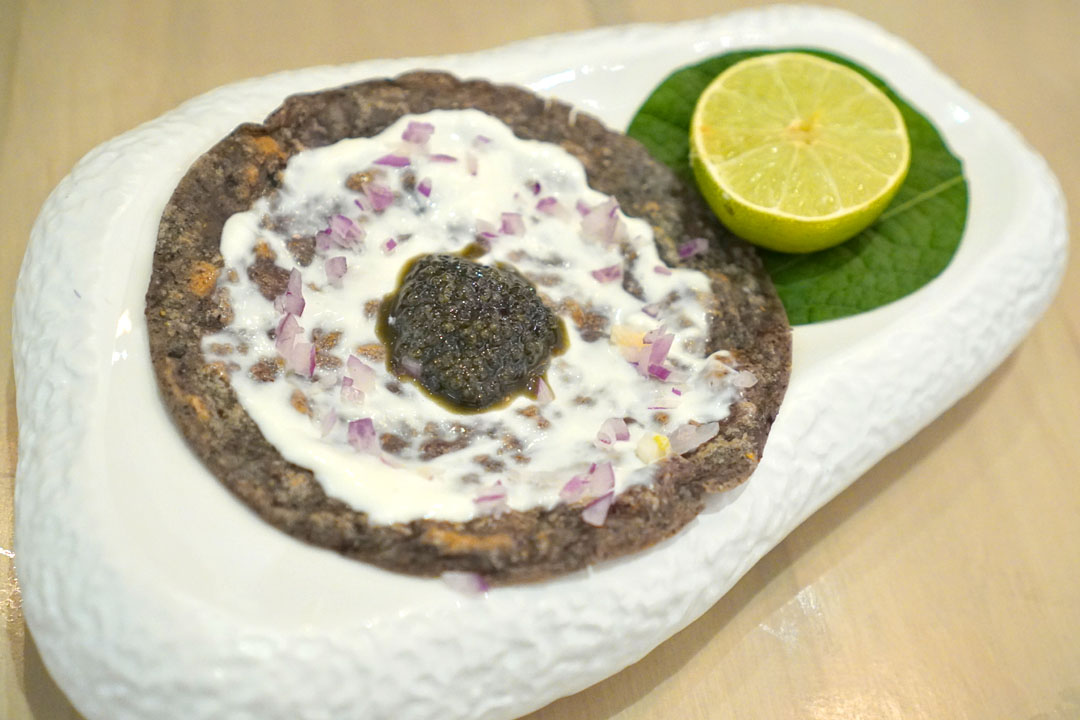
caviar tortilla [$48.00] | maize cake, fish roe, bermuda onion
A rejiggered version of a traditional caviar presentation certainly delivered. I was a fan of how the saltiness of the roe played with the crema and zippiness of red onion, with the whole shebang moderated by the homey taste of that blue corn tortilla. Even better with a squirt of lime.
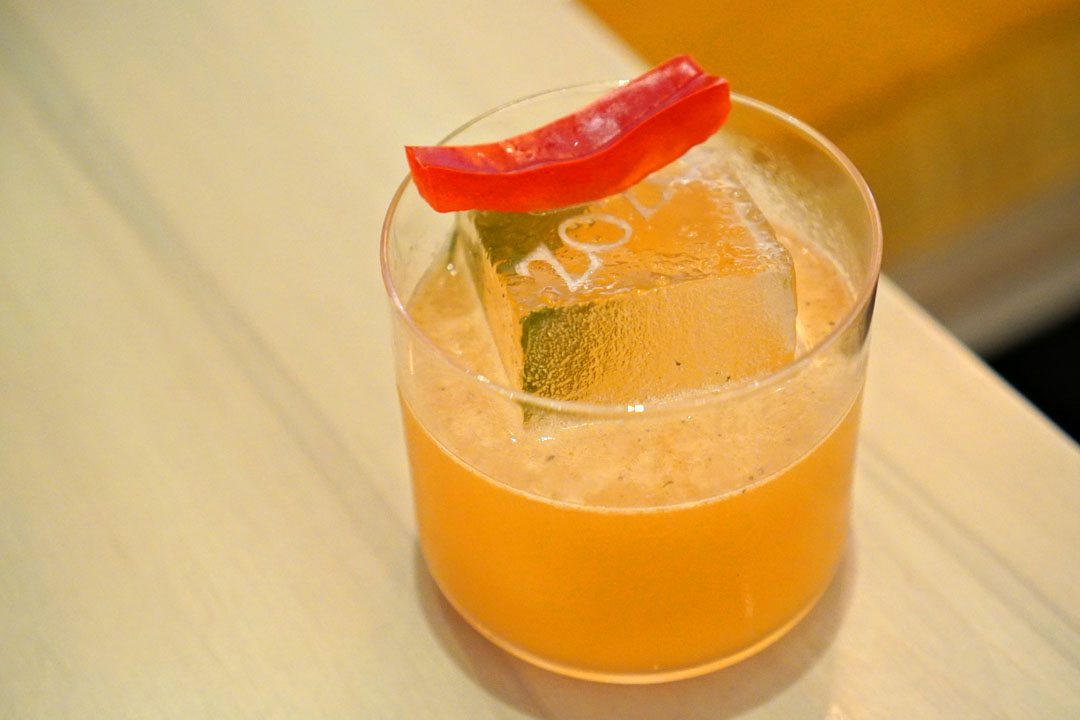
BLOOD SUGAR SEX MAJIK los angeles, cal [$22.00] | a 'rivera' classic - rye whiskey - bell pepper - basil
For my first cocktail, it just felt right to start with one of Julian Cox's classics from Rivera, which I first had all the way back in '09. The crux here was the very apparent vegetal nature of the drink, courtesy of the pepper and basil, and how that interacted with the whiskey and the sweetness of what I believe was agave nectar.
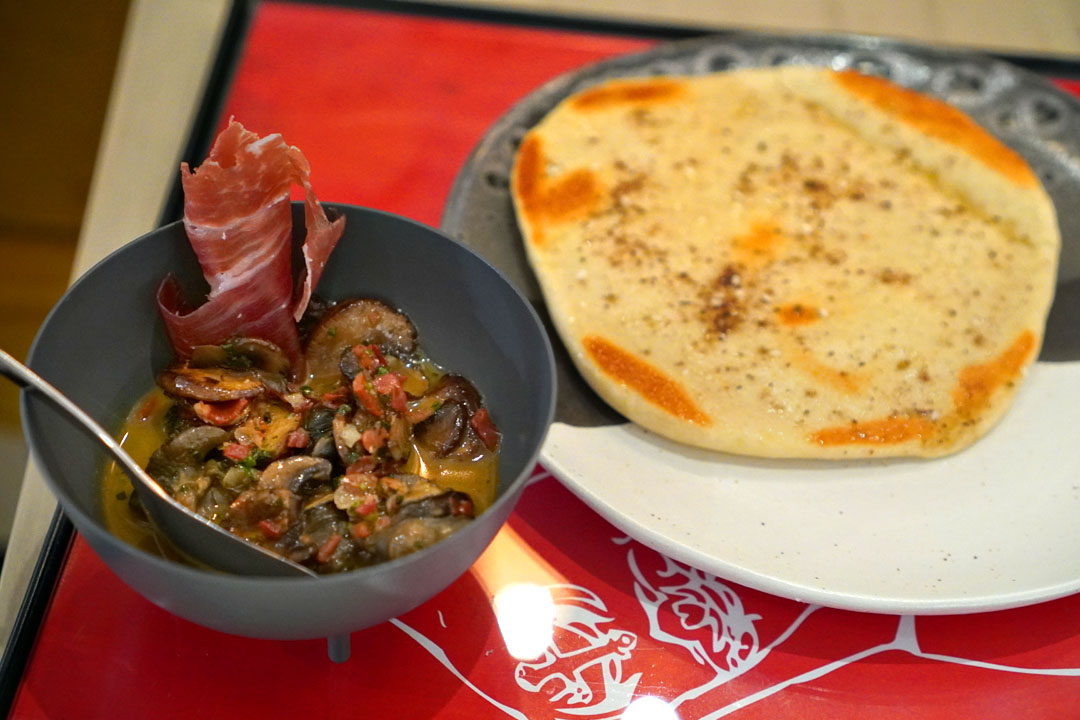
snail forestière [$26.00] | escargots, jamón ibérico, trumpet, persillade
The escargot was a highlight, and one of the best preparations of the gastropod I've had. The snails themselves were spot-on texturally, and I loved how they married with the sheer woodsiness of the mushrooms, all while the ham imparted a hit of salt and the persillade a bit of brightness. I was also enamored with the flatbread, which was just fluffy enough, with a subtle sweetness and a delightful spicing that almost reminded me of za'atar.
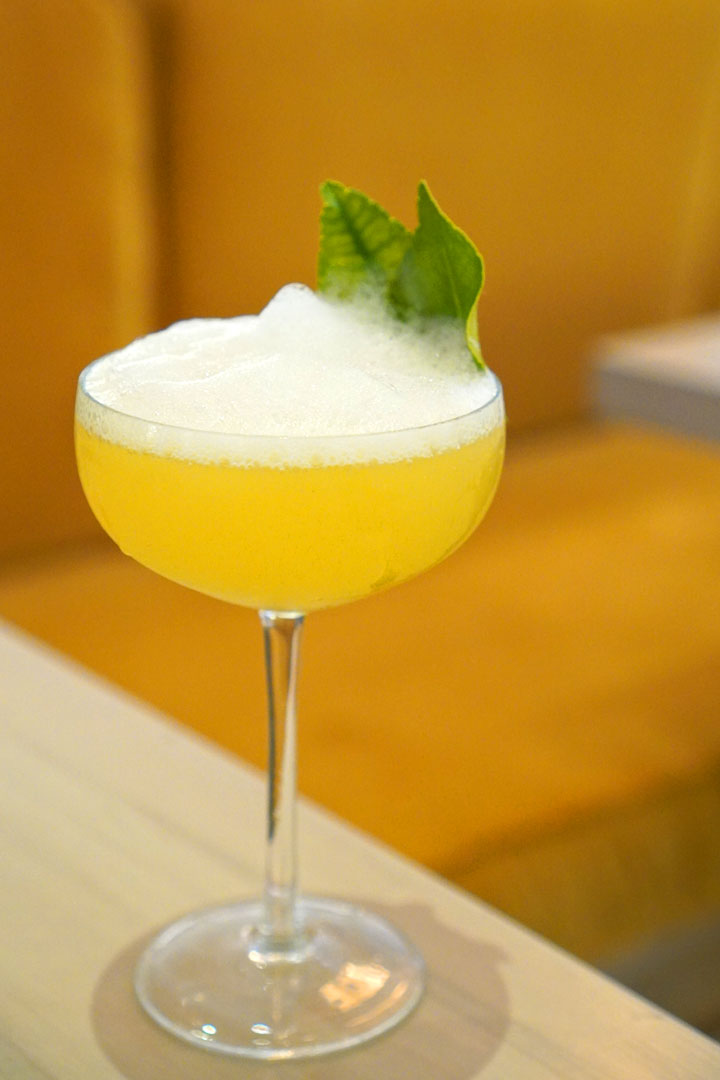
RUM Michoacan, MX [$16.00] | passion fruit - lime - pineapple - yuzu "air"
Our next cocktail blended passion fruit and pineapple to make for a brazenly tropical concoction that was actually softened by that yuzu foam.
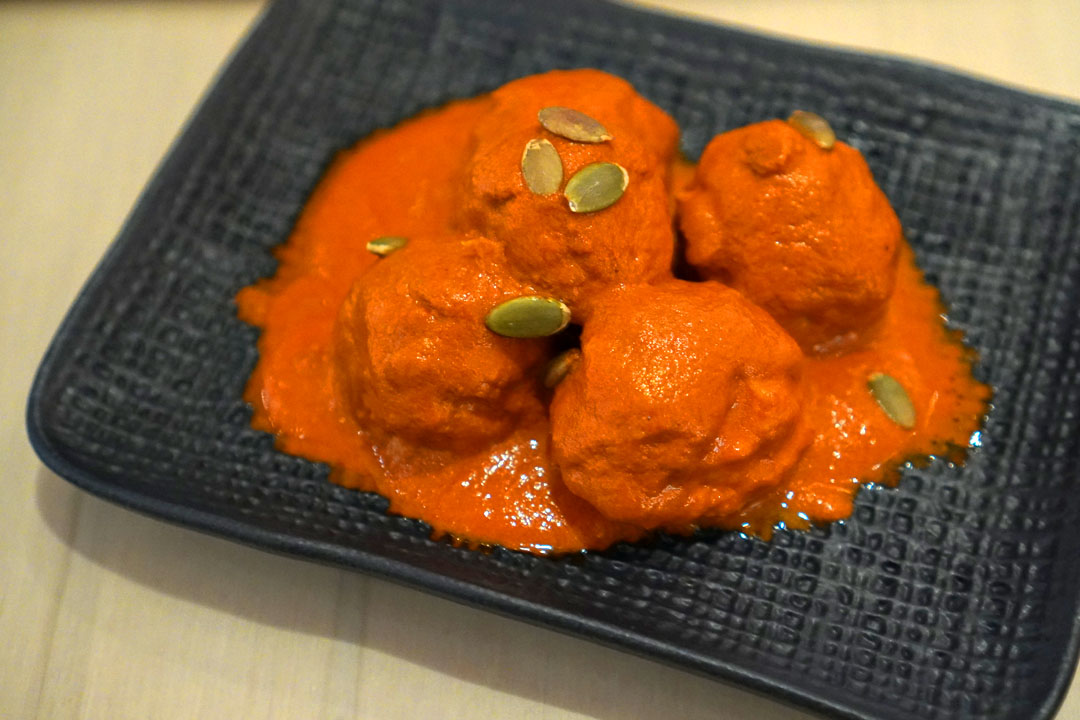
native farm [$26.00] | turkey albóndigas, red chile pepita sauce
Another favorite of mine was the albóndigas, which just might be the best turkey I've had. I was smitten by the meatballs' relatively loose, yet still substantial consistency and their juiciness, but the real key here was that sauce, which combined the essence of dried chilies with a wonderfully nutty accent.

Main dishes at Zozo are accompanied by a tray of sides, which included sweet corn, farro, and soft, sugary, earthy carrots.
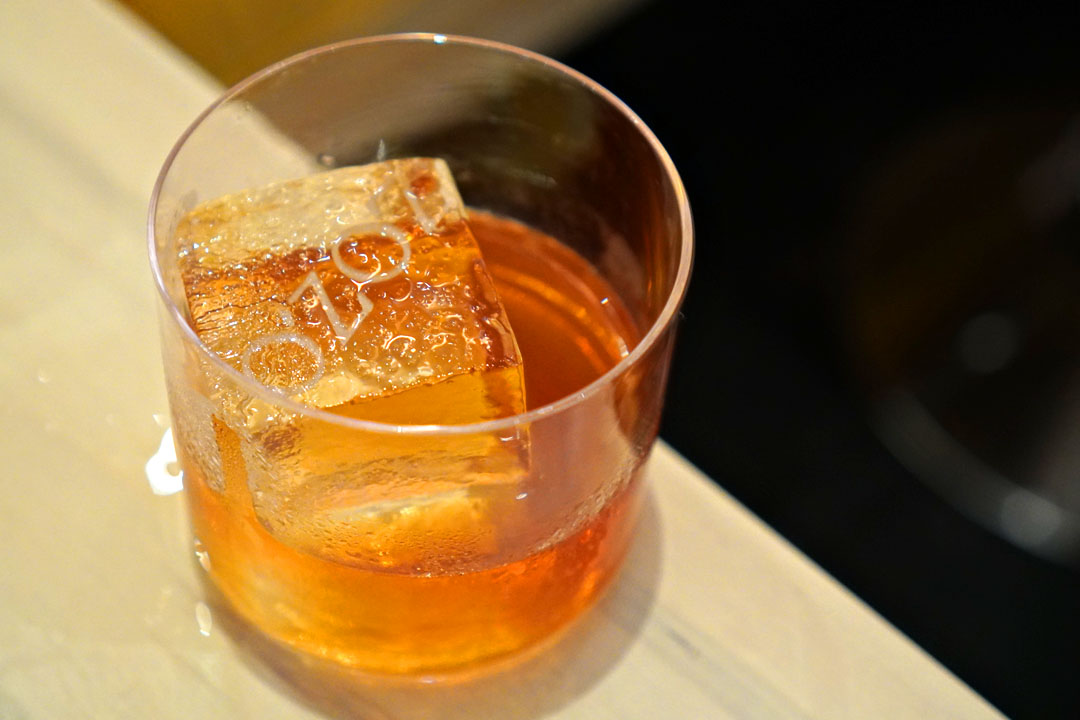
AGED RUM venezuela [$18.00] | velvet falernum - petit cane - chuncho - citrus oil
Here we have clearly the booziest cocktail of the lot, one that melded rich flavors of chocolate and brown sugar with citrus overtones and a welcomed bittersweetness.
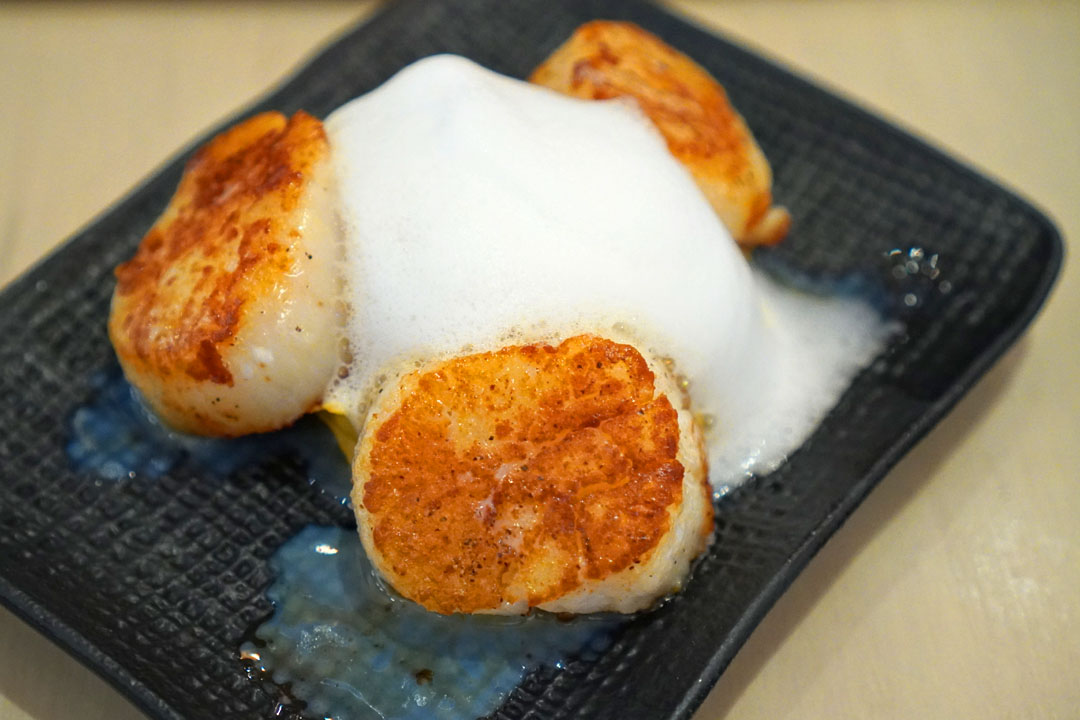
air [$48.00] | citrus vapor, scallops, sea beans, hoja santa
Scallops came out super tender, well-caramelized, and teeming with deep, briny flavors. Given their potency, the citrusy foam and pungency from the yerba santa were crucial for balance.
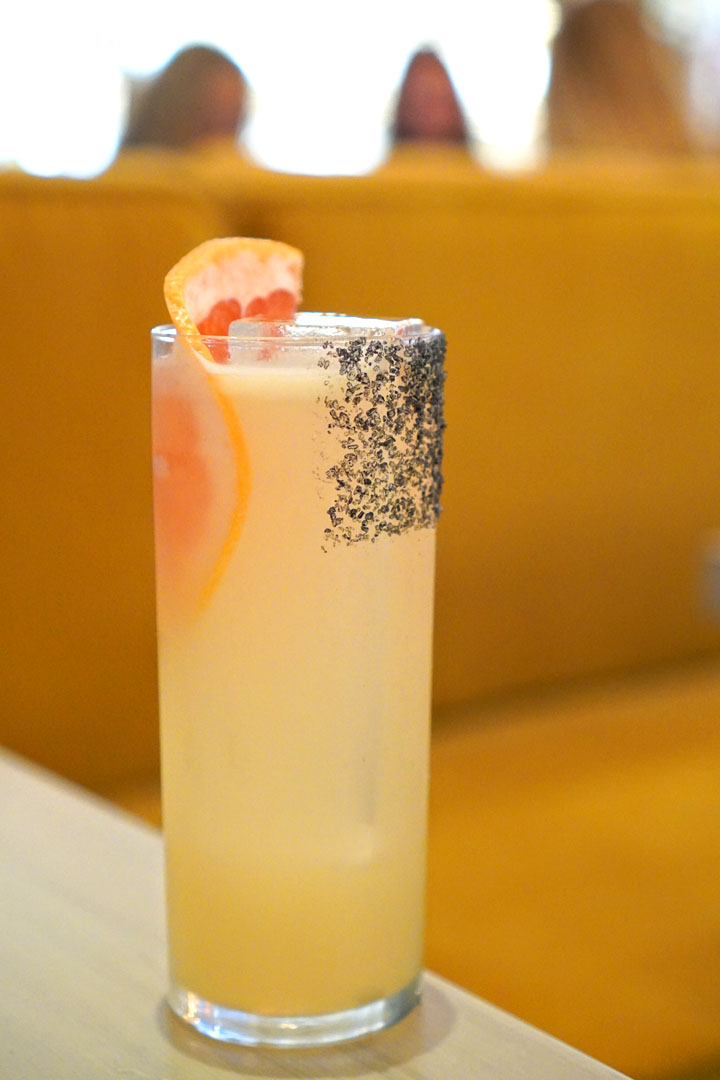
MEZCAL Oaxaca, MX [$16.00] | grapefruit - lime - agave - soda - lava salt
Our sole long cocktail was this easy-going variation on the paloma. It had a bit more depth than the classic drink, and I didn't mind that salty rim, either.
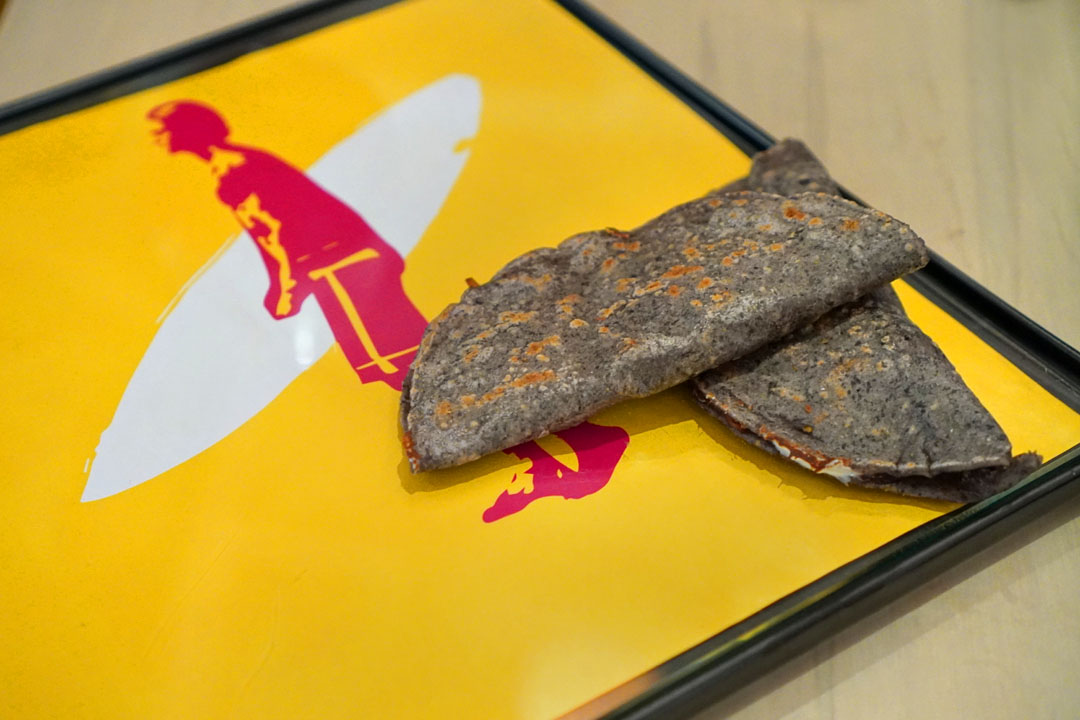
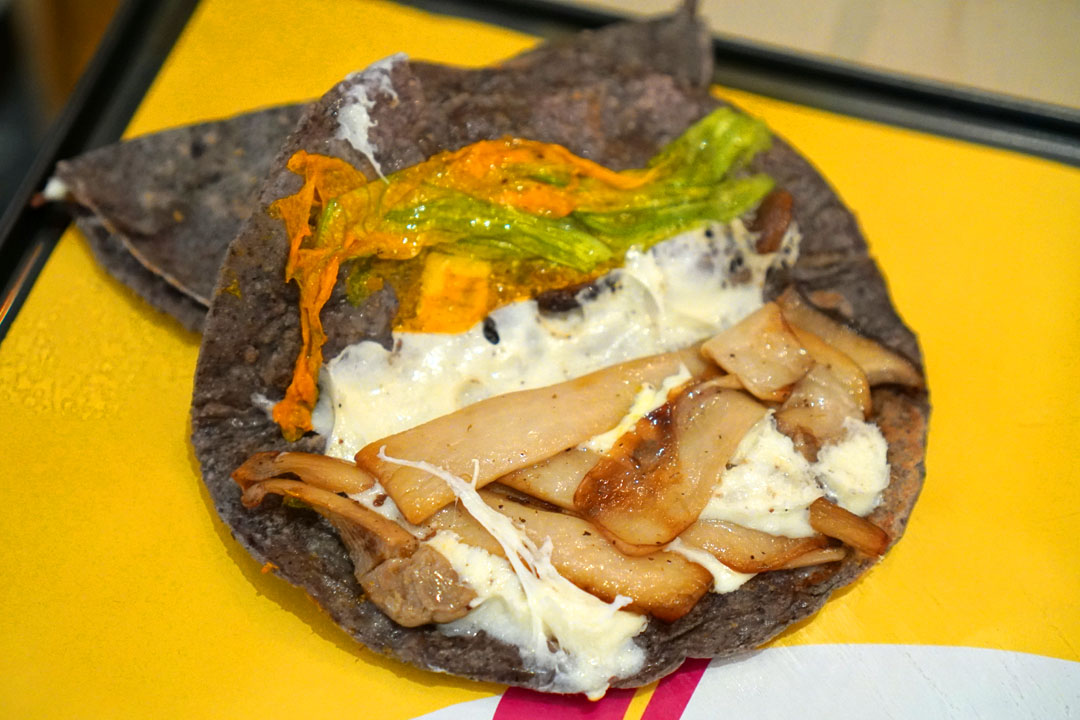
hongo con queso [$15.00] | portobello, crema de queso azul
Mushroom and cheese worked hand-in-hand in this next course, with that hearty, earthy tortilla playing foil, resulting in a straightforwardly gratifying eating experience indeed.
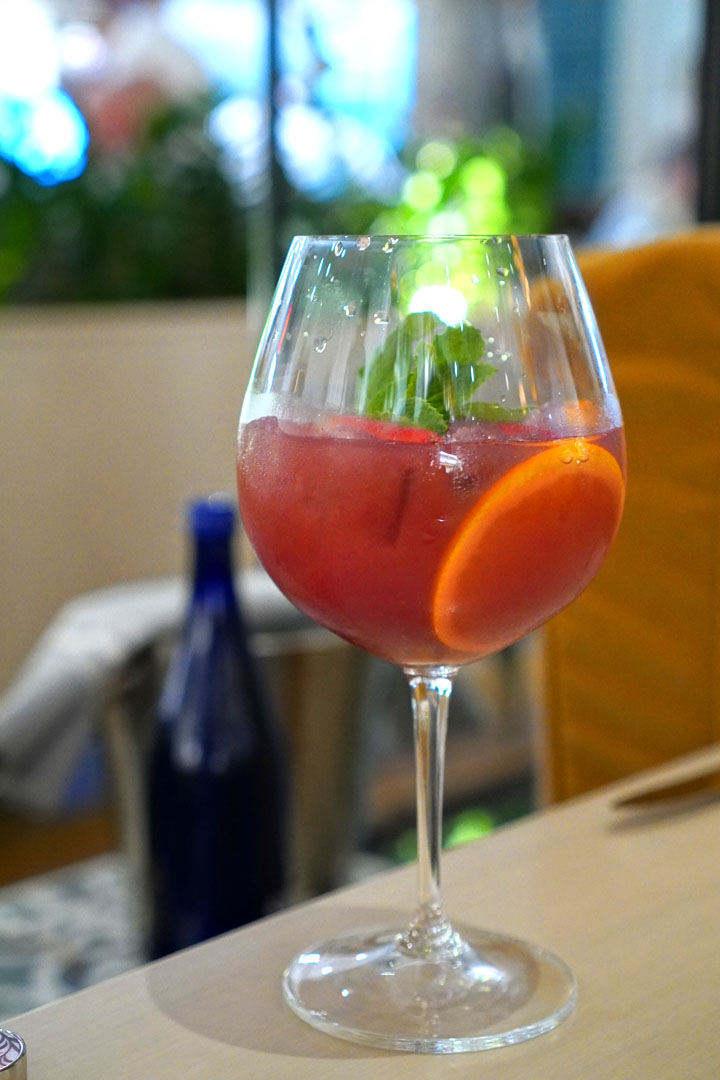
RED SANGRIA spain [$12.00] | vodka - apple brandy - triple sec - orange - cinnamon - clove - mint
For our next two cocktails, we went with two versions of sangria, both of which were more interesting than most. I preferred the red, with its sweet-n-spicy nature that made a whole lotta sense with the general fruitiness of the drink.

pato tamarindo [$26.00] | duck leg confit, estilo zapoteco
The duck confit was another standout, and perhaps the strongest rendition of the dish I've tried. The leg arrived as tender and succulent as I was hoping for, with some deeply duck-y flavors and a healthy amount of herbaceousness, not to mention some delectably salty, crispy skin. And if that wasn't enough, there was also this zippy sauce on the bottom that really livened things up.

WHITE SANGRIA spain [$12.00] | gin - brandy - lemon - bay leaf - peppercorn - juniper berry
The white sangria was also quite enjoyable and even more quaffable. I actually got this stone fruit-like sweetness for some reason, joined by a restrained application of spice.
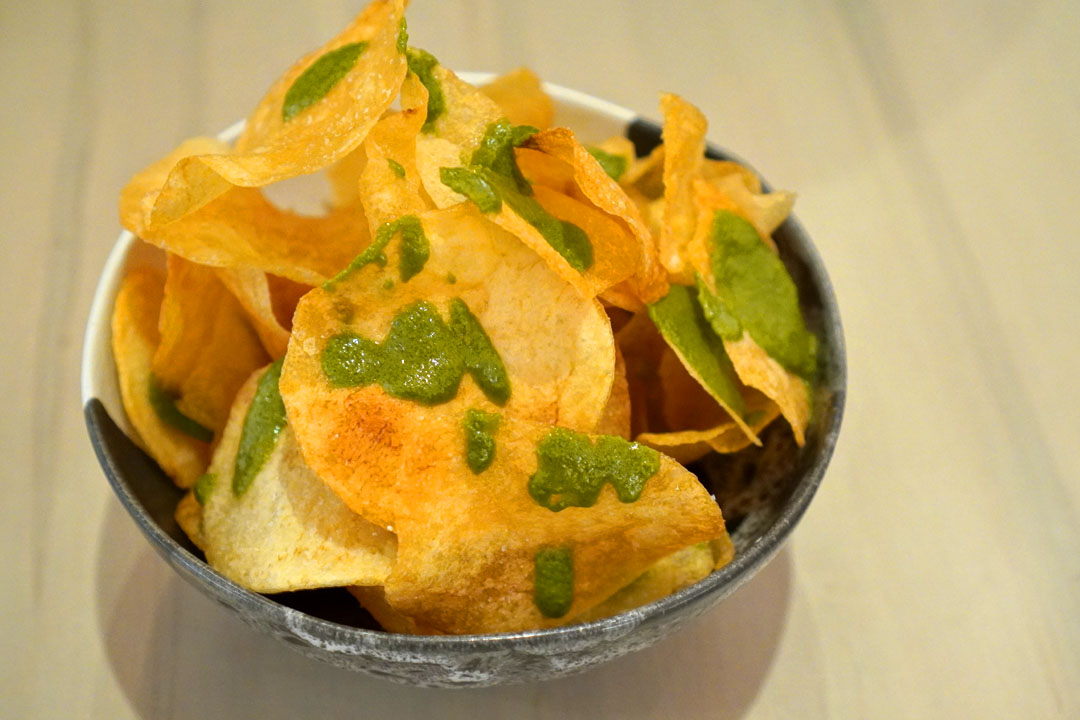
kennebecs [$12.00] | papas fritas, sorrel puree
Potato chips were properly light and crispy, and were perked up by a zesty sorrel condiment that I wouldn't have minded more of.
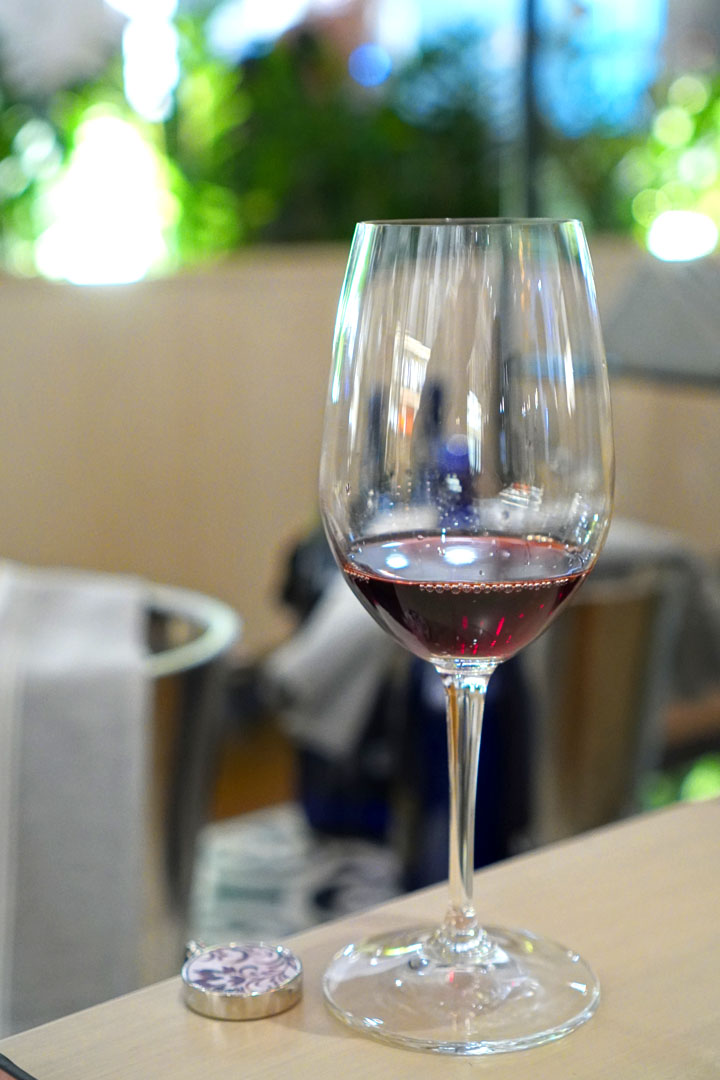
At this point, we were provided a pour of the Tempranillo - La Rioja Alta - Viña Alberdi - Reserva - Rioja - Spain - 2012 to pair with the lamb below. The wine tasted somewhat younger than expected, with loads of sour cherry joined by spicy, oaky notes and plenty of tannins.
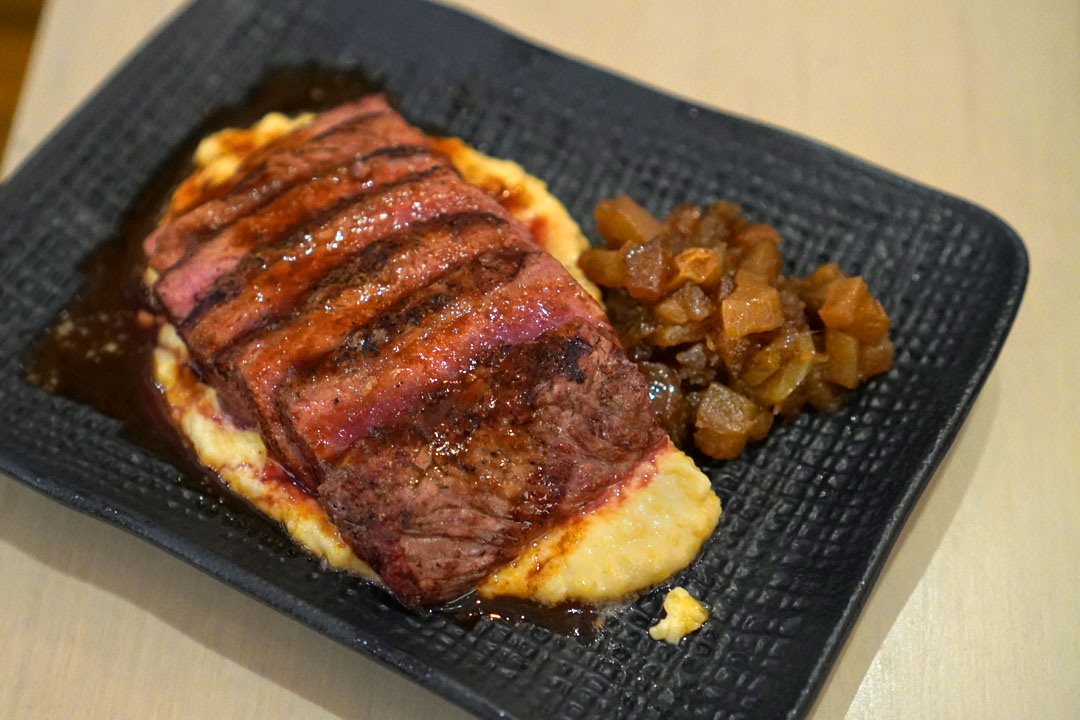
pasture [$48.00] | abiquiú lamb, chayote chutney, heirloom polenta
Our final main brought out some super flavorful (and never gamey) cuts of lamb. The meat was matched with a semi-sweet chayote chutney--which I don't think I'd ever seen before--while polenta helped temper the strong flavors going on.
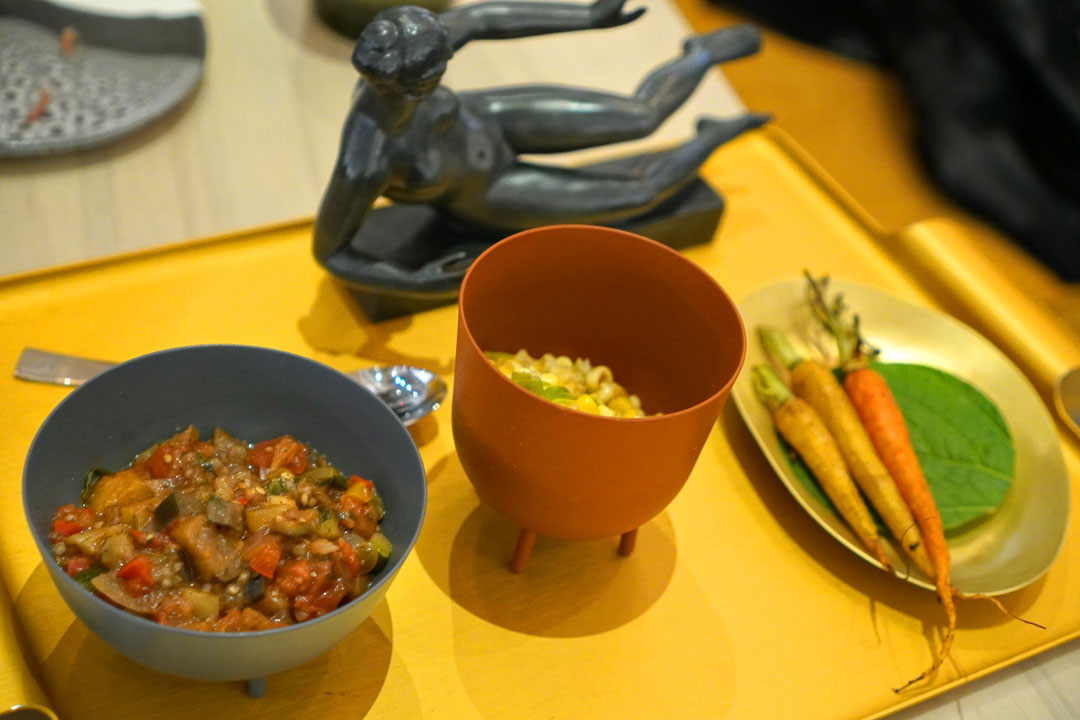
This tray of accoutrements was a bit different than the first, featuring a well-spiced vegetable medley that I quite liked.
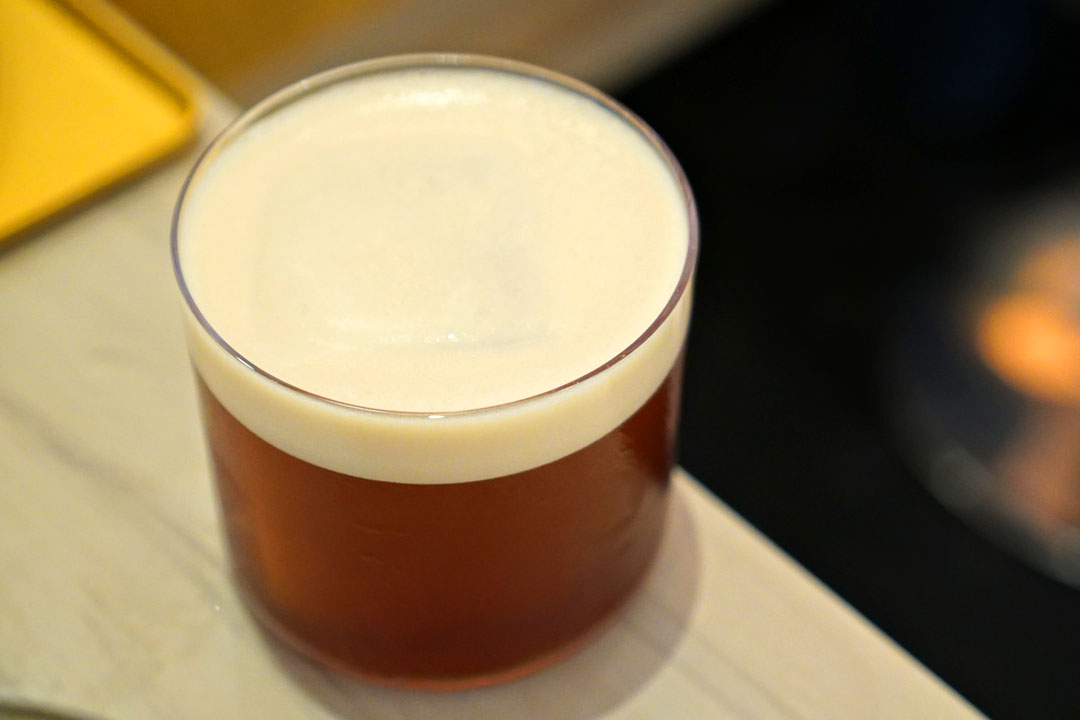
CUARENTA TRES/AMARO spain/italy [$16.00] | espresso - banana
Wanting something a bit dessert-y, we went with a Licor 43-boosted carajillo for our final cocktail, which fit the bill nicely due to how effectively the banana intertwined with the coffee.
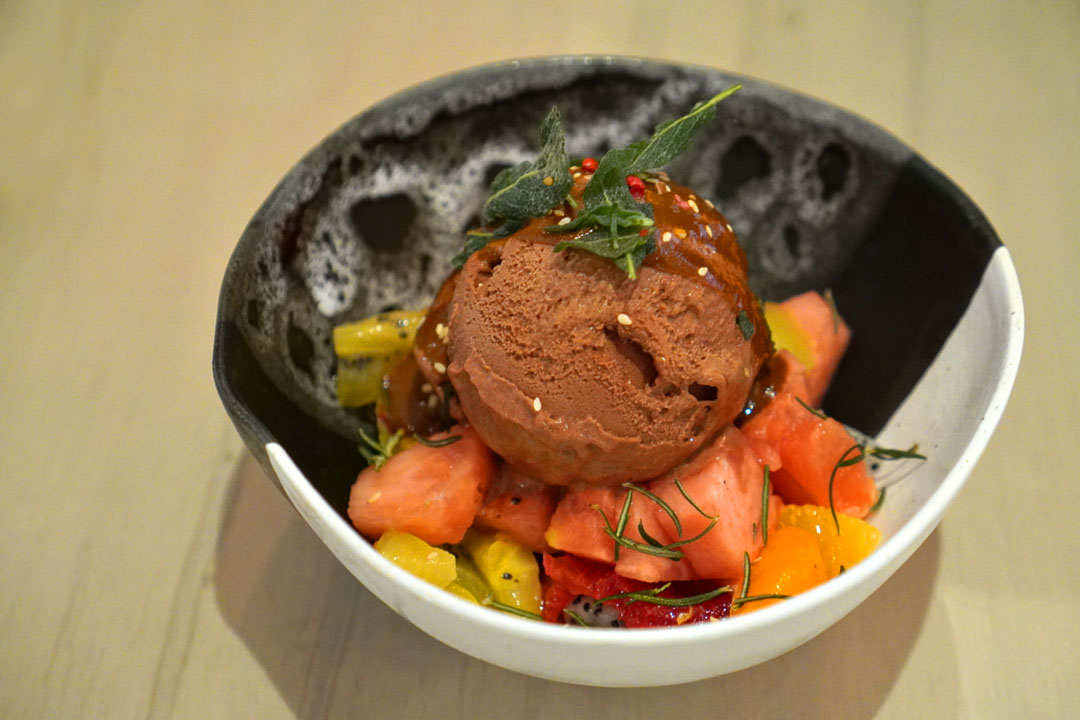
ritual [$12.00] | zapotec mole ice cream, heirbas dulces, chiles suaves
There was but a single dessert on the menu, so of course we had to get it. I was impressed by how forcefully the ice cream captured the sweet, savory, spicy, and nutty qualities of mole, while herbs and what seemed like peppercorn added further aspects to the dish.
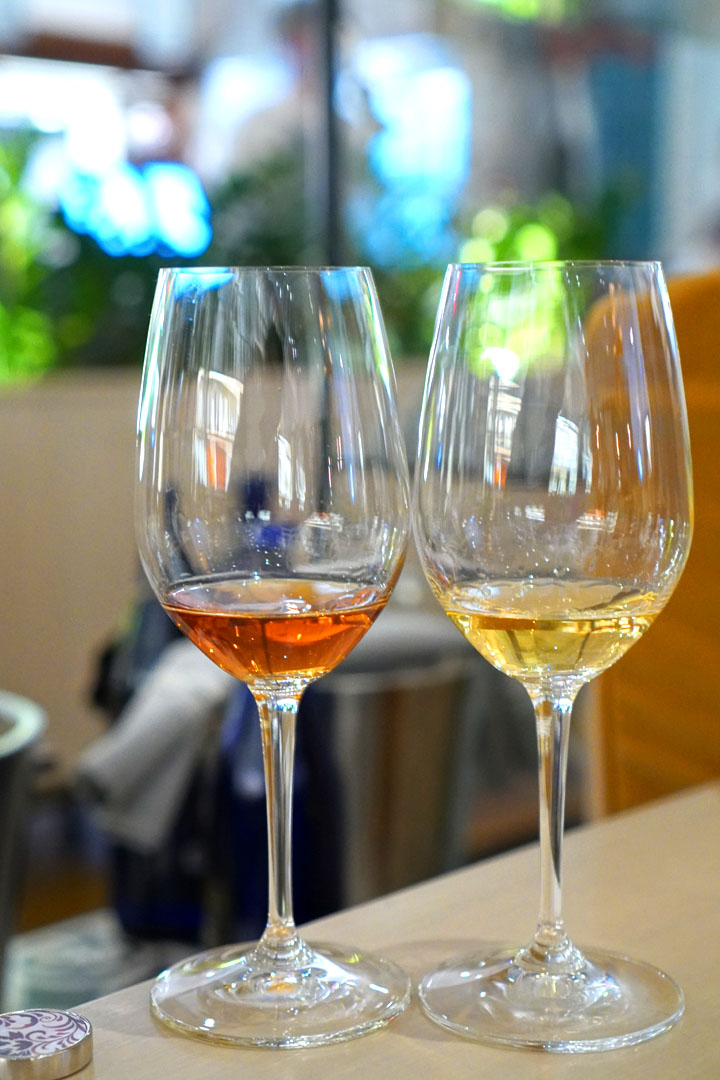
Chef Sedlar was known for having Château d'Yquem on tap at Bikini, and Zozo's offering of the iconic dessert wine by the glass is a nod to that. I tried the Château d'Yquem 2020 [$28] first, and got boatloads of honeyed pineapple on the nose, while its palate was thick and rich, yet fresh and lively, with a countering acidity--a bit young, a bit brash overall. I preferred the Château d'Yquem 1990 [$35]. The older wine had a bouquet that went in a nutty, oxidative, yet still honeyed, stone fruit-y direction. Taking a sip, I found the liquid heady and viscous, with more oxidative elements and a deep, complex, multifaceted sweetness that I reveled in.
The word that came to mind after the meal was "delightful," as the food really did captivate me. It seems that Sedlar is back in town with a vengeance, and his cooking here did a great job combining his nouvelle cuisine tendencies with his Southwestern heritage, all presented in his peculiar visual style. The dishes were imbued with a palpable sense of nostalgia and familiarity to boot, sort of taking me back to my halcyon days of the late 2000s--there really is no one doing food like this in LA. Zozo represents a triumphant return to the Southern California dining scene for Sedlar, and serves as a worthy last hurrah to his storied career.
148 S La Brea Ave, Los Angeles, CA 90036
323-746-4700
www.zozolabrea.com
Sat 02/17/2024, 06:10p-10:40p

Back in the late aughts, when I first began exploring the then-rising DTLA dining scene, one of my favorite spots was Chef John Sedlar's Rivera. The South Park eatery impressed me with its pan-Latin American fare, and soon became one of my go-to places in the area, so I was certainly saddened when it closed at the end of 2014. I had thought that Sedlar and LA had parted ways forever, and therefore I was pleasantly surprised when it was revealed that he'd be returning to the Southland with a totally new concept. Zozo thus grand-opened on February 2nd, serving what the restaurant calls the "cuisine of the sun," which ostensibly draws from French, Hispanic, and Native American traditions. The Chef's partners are William Chait, Raphael Francois, and Jordan Ogron, who together form FOC Hospitality.
About the Chef: John Stanley Sedlar (a.k.a. John Rivera Sedlar) was born in December 1954 in Santa Fe, New Mexico. Father Joseph "Joe" Sedlar was in the Air Force, so as a child, he actually lived in Utah and California, as well as in Spain and France. However, the family would return home to Santa Fe every few years, and moved back permanently after dad retired in 1967. Mother Rose's side of the family had roots in Abiquiú, a small settlement about 50 miles north of Santa Fe, and it was at the adobe abode that his great-grandparents built where Sedlar experienced his most formative food memories. Aunt Jeronima "Jerry" Newsom was actually personal chef and chauffeur for Georgia O'Keeffe (who lived nearby), while maternal grandmother Eloisa Martinez Rivera was particularly skilled in the kitchen, and taught her grandson the foundations of New Mexican cookery.
In his early teens, Sedlar got a job at a gas station in order to earn some money, but started working in restaurants not long after, thanks to some strings that Eloisa had pulled. His first position was at the historic La Fonda on the Plaza, but he soon transitioned over to The Bull Ring, a longstanding spot that served both French haute cuisine and casual New Mexican fare. He began as a dishwasher, then moved over to the French side of the kitchen, which was run by Chef Jean Frigo, an early mentor. Sedlar stayed there for around two years, then moved to Southern California in 1973, following high school graduation.
He (along with some friends from Santa Fe) settled in the South Bay, and soon found a job at a restaurant in Manhattan Beach called The Silo. He eventually rose to become Executive Chef there, turning the menu from Californian to French to Southwestern, but still lacked passion for his craft. In 1975, Jean Bertranou opened L'Ermitage on La Cienega (at the site of the current Koi), and after Sedlar had a mind-blowing meal at the French spot, he decided to become an apprentice there, working in garde manger and refining his cooking skills even further (alongside Roy Yamaguchi). After Bertranou died unexpectedly in 1980, Sedlar struck out on his own, partnering up with his friend (and fellow chef) Estevan "Steve" Garcia to start their own place in Manhattan Beach. The day they signed the lease on the space, the two celebrated by drinking a bottle of 1953 Château Cos d'Estournel, a wine from Bordeaux's Saint-Estèphe appellation that inspired the restaurant's name.
Saint Estèphe bowed in October 1980 serving nouvelle Cal-French fare, but in the fall of 1982, Sedlar was inspired by Paul Bocuse to experiment with regional American cooking, and thus returned from Santa Fe with 15 cases of chili peppers and other ingredients and got to work. He gradually introduced contemporary Southwestern dishes to the menu before switching over completely the following spring, thus giving birth to a new genre of New Mexican-meets-French fusion that was immortalized in the Chef's first cookbook: Modern Southwest Cuisine, released in 1986. Despite the fame and acclaim that his food had brought him (in 1984, he made James Beard's "Who's Who of Food & Beverage in America" list), Sedlar sold his stake in Saint Estèphe to Garcia in 1990, and the restaurant shuttered in July 1992.
He then commenced work on his next project, Bikini, which opened in Santa Monica in late 1991. This sophomore effort was even posher, even more venturesome, even more globally-inflected than his first, and was also well received. Unfortunately, the place closed for good in January 1994 due to fallout from the Northridge earthquake and the generally poor state of the economy. Sedlar's next move was to partner with Kimpton on Abiquiu, which landed in San Francisco in May 1994. At the end of July that year, it was joined by a second outpost in the old Bikini space. Abiquiu was decidedly more casual, more overtly Southwestern than its predecessor, but the SF iteration only lasted a year, while the Chef sold his stake in SaMo in February 1996 (the restaurant didn't last long after that, and was turned into Rix, then Union).
Following, Sedlar consulted at the Pacific Design Center for four months, then was tasked to create the menu at Billboard Live, which opened on the Sunset Strip in August that year (it was renamed The Key Club in 1998). His next challenge was to develop an eclectic menu for Encounter, the restaurant at LAX's Theme Building, which dropped in 1997. In 1999, the Chef started Abiquiu Foods LLC (d.b.a. Sedlar's Southwest Kitchen), a company focused on selling grocery food products. During this period, he also wrote two cookbooks--Tamales (1997) and Great Chile Relleno Book (2002)--and also served as spokesman for Patrón tequila for eight years. And this was in addition to all the catering, traveling, and researching happening concurrently, which helped give rise to an idea for Museum Tamal, a museum dedicated to Latin cuisine.
However, Sedlar soon began missing cooking in an actual restaurant, and thus teamed up with Bill Chait and Eddie Sotto to launch Rivera. Named after the Chef's grandma, the place bowed in January 2009 and helped breathe new life into the Downtown LA dining landscape. The LA Times gave it a three-and-a-half star rating, while Los Angeles Magazine was even more generous with its four stars. Esquire deemed the spot one of its Best New Restaurants of 2009, and even named Sedlar "Chef of the Year" in 2011. James Beard conferred semifinalist status to Sedlar for five consecutive years from 2010 to 2014, and Rivera even launched the career of celebrated barman Julian Cox, who's become somewhat of an icon in the LA bar scene. Its success eventually gave rise to another eatery called Playa, which opened in February 2011 in the Fairfax District.
However, Sedlar eventually decided to move back to Santa Fe, and thus shuttered Rivera right at the end of 2014 (Playa closed in March 2013). Now back in New Mexico, the Chef debuted Eloisa (also named after his abuela) inside the Drury Plaza Hotel in April 2015. The Southwestern spot was nominated for James Beard's "Best New Restaurant" award in 2016, but Sedlar stepped away from the business at the end of 2019, and the place was shut down the following April. However, by 2021, the now-retired Chef had been convinced by Chait to open one final restaurant, so here we are today.


Located on the western edge of Hancock Park, along its border with Fairfax, Zozo takes over a space that formerly held the longstanding Cafe Midi, which opened in 1998 but had closed during the pandemic. Interestingly, the restaurant is actually set in a home decor store called Maison Midi, which is an offshoot of clothing retailer American Rag next door (both are owned by Mark Werts). The setting does make for a bit of an unexpected dining experience. Patio seating is also an option.



Tonight's menu, replete with some curious dish names, went by the also-curious moniker of Convivium. Beverage-wise, you get an array of theme-appropriate cocktails from Heidi Wittekind (The Hungry Cat, Fig & Olive, Zengo, The Bazaar), as well as a small but fairly interesting wine list from Jordan Ogron focused on producers from areas around the prime meridian. Note the red poppy motif on the menu, a nod to Georgia O'Keeffe. Click for larger versions.


tortillas florales [$16.00] | maize cakes, organic blossoms, avocado butter
These flower-impregnated corn tortillas were a staple at Rivera back in the day, so I was glad to see them on the menu tonight. I loved their texture--a combination of crispy griddled bits and supple sections--while their masa-forward, just ever so slightly floral taste matched like clockwork with the guacamole. Straightforward, but oh-so satisfying.

We were provided a welcome beverage in the form of the Blanc de Blanc - Graham Beck - Robertson - South Africa - 2017. The sparkling wine showed off loads of orchard fruits on the nose, pear in particular, though with time, dark, more plummy nuances began appearing. As for the palate, I found it rich, concentrated, with a nuttiness commingled with citrus and just a smidge of yeast.

winter salad [$15.00] | dragon fruit, cactus pear, persimmon, sea beans
Sedlar's known for his fondness for distinct plateware, and that proclivity was certainly on display tonight. This salad made for a refreshing beginning thanks to its unabashedly bitter notes, juxtaposed against a troupe of sweet, juicy elements (I was especially surprised to see the use of star fruit). Nice crunch here, too.

caviar tortilla [$48.00] | maize cake, fish roe, bermuda onion
A rejiggered version of a traditional caviar presentation certainly delivered. I was a fan of how the saltiness of the roe played with the crema and zippiness of red onion, with the whole shebang moderated by the homey taste of that blue corn tortilla. Even better with a squirt of lime.

BLOOD SUGAR SEX MAJIK los angeles, cal [$22.00] | a 'rivera' classic - rye whiskey - bell pepper - basil
For my first cocktail, it just felt right to start with one of Julian Cox's classics from Rivera, which I first had all the way back in '09. The crux here was the very apparent vegetal nature of the drink, courtesy of the pepper and basil, and how that interacted with the whiskey and the sweetness of what I believe was agave nectar.

snail forestière [$26.00] | escargots, jamón ibérico, trumpet, persillade
The escargot was a highlight, and one of the best preparations of the gastropod I've had. The snails themselves were spot-on texturally, and I loved how they married with the sheer woodsiness of the mushrooms, all while the ham imparted a hit of salt and the persillade a bit of brightness. I was also enamored with the flatbread, which was just fluffy enough, with a subtle sweetness and a delightful spicing that almost reminded me of za'atar.

RUM Michoacan, MX [$16.00] | passion fruit - lime - pineapple - yuzu "air"
Our next cocktail blended passion fruit and pineapple to make for a brazenly tropical concoction that was actually softened by that yuzu foam.

native farm [$26.00] | turkey albóndigas, red chile pepita sauce
Another favorite of mine was the albóndigas, which just might be the best turkey I've had. I was smitten by the meatballs' relatively loose, yet still substantial consistency and their juiciness, but the real key here was that sauce, which combined the essence of dried chilies with a wonderfully nutty accent.

Main dishes at Zozo are accompanied by a tray of sides, which included sweet corn, farro, and soft, sugary, earthy carrots.

AGED RUM venezuela [$18.00] | velvet falernum - petit cane - chuncho - citrus oil
Here we have clearly the booziest cocktail of the lot, one that melded rich flavors of chocolate and brown sugar with citrus overtones and a welcomed bittersweetness.

air [$48.00] | citrus vapor, scallops, sea beans, hoja santa
Scallops came out super tender, well-caramelized, and teeming with deep, briny flavors. Given their potency, the citrusy foam and pungency from the yerba santa were crucial for balance.

MEZCAL Oaxaca, MX [$16.00] | grapefruit - lime - agave - soda - lava salt
Our sole long cocktail was this easy-going variation on the paloma. It had a bit more depth than the classic drink, and I didn't mind that salty rim, either.


hongo con queso [$15.00] | portobello, crema de queso azul
Mushroom and cheese worked hand-in-hand in this next course, with that hearty, earthy tortilla playing foil, resulting in a straightforwardly gratifying eating experience indeed.

RED SANGRIA spain [$12.00] | vodka - apple brandy - triple sec - orange - cinnamon - clove - mint
For our next two cocktails, we went with two versions of sangria, both of which were more interesting than most. I preferred the red, with its sweet-n-spicy nature that made a whole lotta sense with the general fruitiness of the drink.

pato tamarindo [$26.00] | duck leg confit, estilo zapoteco
The duck confit was another standout, and perhaps the strongest rendition of the dish I've tried. The leg arrived as tender and succulent as I was hoping for, with some deeply duck-y flavors and a healthy amount of herbaceousness, not to mention some delectably salty, crispy skin. And if that wasn't enough, there was also this zippy sauce on the bottom that really livened things up.

WHITE SANGRIA spain [$12.00] | gin - brandy - lemon - bay leaf - peppercorn - juniper berry
The white sangria was also quite enjoyable and even more quaffable. I actually got this stone fruit-like sweetness for some reason, joined by a restrained application of spice.

kennebecs [$12.00] | papas fritas, sorrel puree
Potato chips were properly light and crispy, and were perked up by a zesty sorrel condiment that I wouldn't have minded more of.

At this point, we were provided a pour of the Tempranillo - La Rioja Alta - Viña Alberdi - Reserva - Rioja - Spain - 2012 to pair with the lamb below. The wine tasted somewhat younger than expected, with loads of sour cherry joined by spicy, oaky notes and plenty of tannins.

pasture [$48.00] | abiquiú lamb, chayote chutney, heirloom polenta
Our final main brought out some super flavorful (and never gamey) cuts of lamb. The meat was matched with a semi-sweet chayote chutney--which I don't think I'd ever seen before--while polenta helped temper the strong flavors going on.

This tray of accoutrements was a bit different than the first, featuring a well-spiced vegetable medley that I quite liked.

CUARENTA TRES/AMARO spain/italy [$16.00] | espresso - banana
Wanting something a bit dessert-y, we went with a Licor 43-boosted carajillo for our final cocktail, which fit the bill nicely due to how effectively the banana intertwined with the coffee.

ritual [$12.00] | zapotec mole ice cream, heirbas dulces, chiles suaves
There was but a single dessert on the menu, so of course we had to get it. I was impressed by how forcefully the ice cream captured the sweet, savory, spicy, and nutty qualities of mole, while herbs and what seemed like peppercorn added further aspects to the dish.

Chef Sedlar was known for having Château d'Yquem on tap at Bikini, and Zozo's offering of the iconic dessert wine by the glass is a nod to that. I tried the Château d'Yquem 2020 [$28] first, and got boatloads of honeyed pineapple on the nose, while its palate was thick and rich, yet fresh and lively, with a countering acidity--a bit young, a bit brash overall. I preferred the Château d'Yquem 1990 [$35]. The older wine had a bouquet that went in a nutty, oxidative, yet still honeyed, stone fruit-y direction. Taking a sip, I found the liquid heady and viscous, with more oxidative elements and a deep, complex, multifaceted sweetness that I reveled in.
The word that came to mind after the meal was "delightful," as the food really did captivate me. It seems that Sedlar is back in town with a vengeance, and his cooking here did a great job combining his nouvelle cuisine tendencies with his Southwestern heritage, all presented in his peculiar visual style. The dishes were imbued with a palpable sense of nostalgia and familiarity to boot, sort of taking me back to my halcyon days of the late 2000s--there really is no one doing food like this in LA. Zozo represents a triumphant return to the Southern California dining scene for Sedlar, and serves as a worthy last hurrah to his storied career.
0 Comments:
Post a Comment
Subscribe to Post Comments [Atom]
<< Home